At the end of the season, it’s always a bit bittersweet watching the last of the Canada geese head south for the winter and knowing that we won’t see our beloved ospreys, ruby-throated hummingbirds, and American redstarts until spring returns. But while we do need to bid a temporary adieu to some of our feathered companions, not all birds migrate. In fact, we can still enjoy many of our favorite feathered friends, even in the depths of winter!
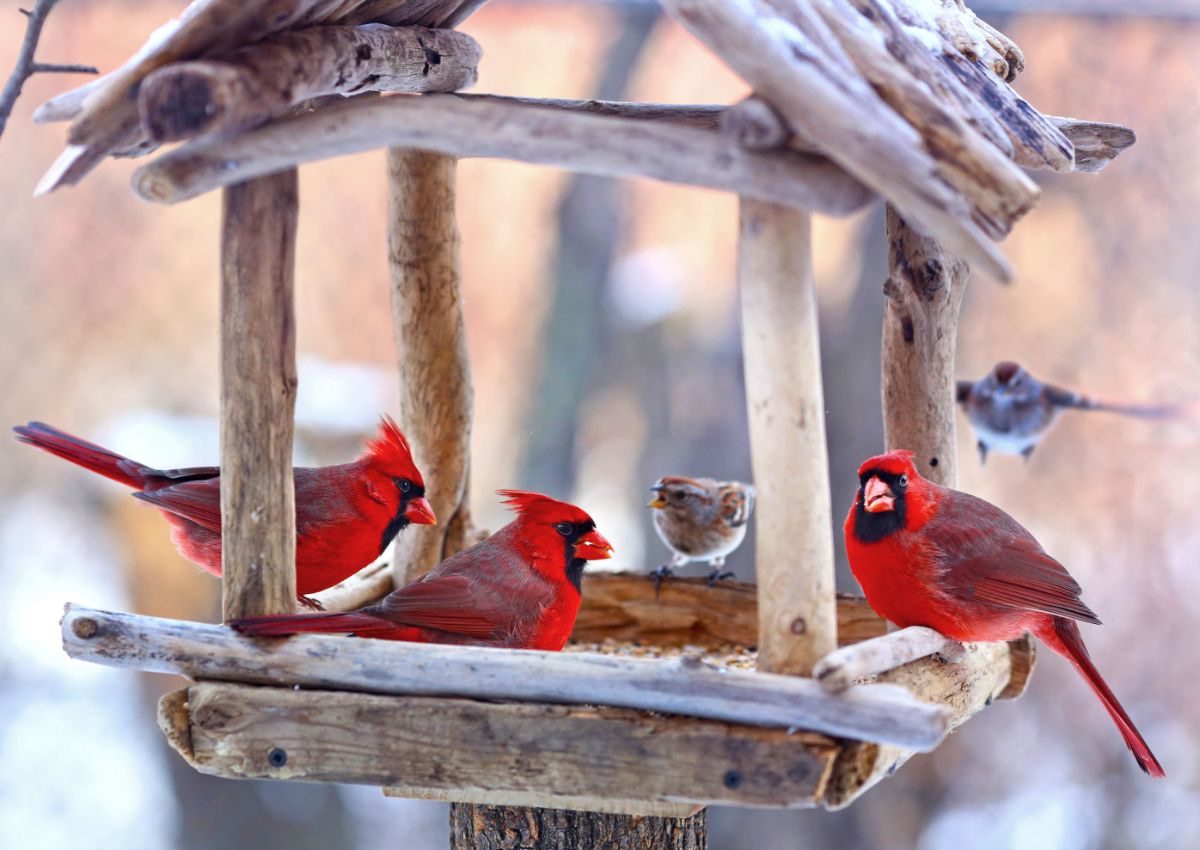
While some birds migrate south in fall, there are a number of non-migratory or “resident” birds that remain year-round in even the chilliest regions. In this guide, we’ll introduce you to some of the most common non-migratory North American birds to look for this winter. And we’ll give you some suggestions on how to attract these hardy birds to your winter garden, too!
Jump to:
- 15 non-migratory North American birds to feed this winter
- 1. Northern Cardinal
- 2. Black-Capped Chickadee
- 3. Downy Woodpecker
- 4. Crow and Raven
- 5. Blue Jay
- 6. Tufted Titmouse
- 7. Anna’s Hummingbird
- 8. House Sparrow
- 9. Nuthatch
- 10. Northern Mockingbird
- 11. Dove
- 12. Pileated Woodpecker
- 13. Wild Turkey
- 14. House Finch
- 15. Bobwhite Quail
- Frequently asked questions
- Summary
15 non-migratory North American birds to feed this winter
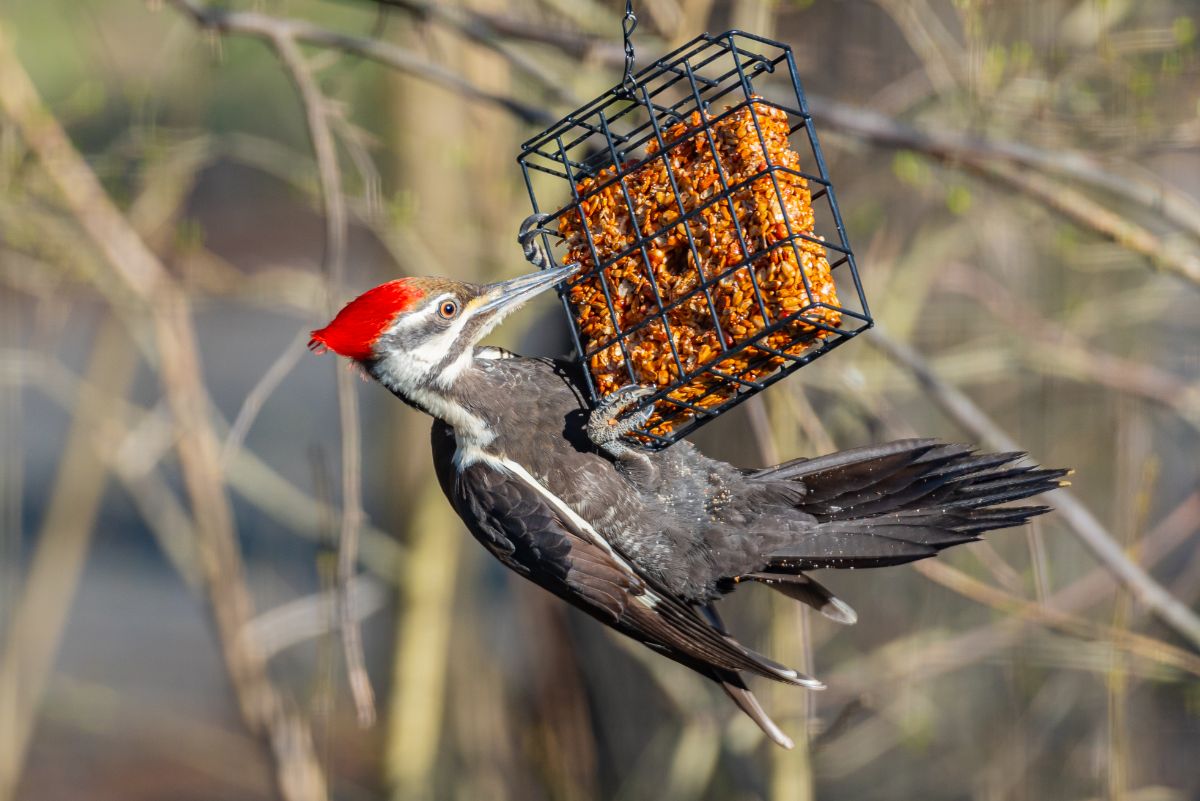
While attracting birds to our yards will give us gardeners plenty to look forward to in the winter months, luring birds to our gardens has other benefits, too. During winter, food can be very scarce, but by keeping our bird feeders and heated bird baths topped off, we can provide much-needed resources to wildlife. Not to mention, once birds discover that our gardens are reliable nesting spots, they may decide to raise their young among our flower beds when spring arrives!
1. Northern Cardinal
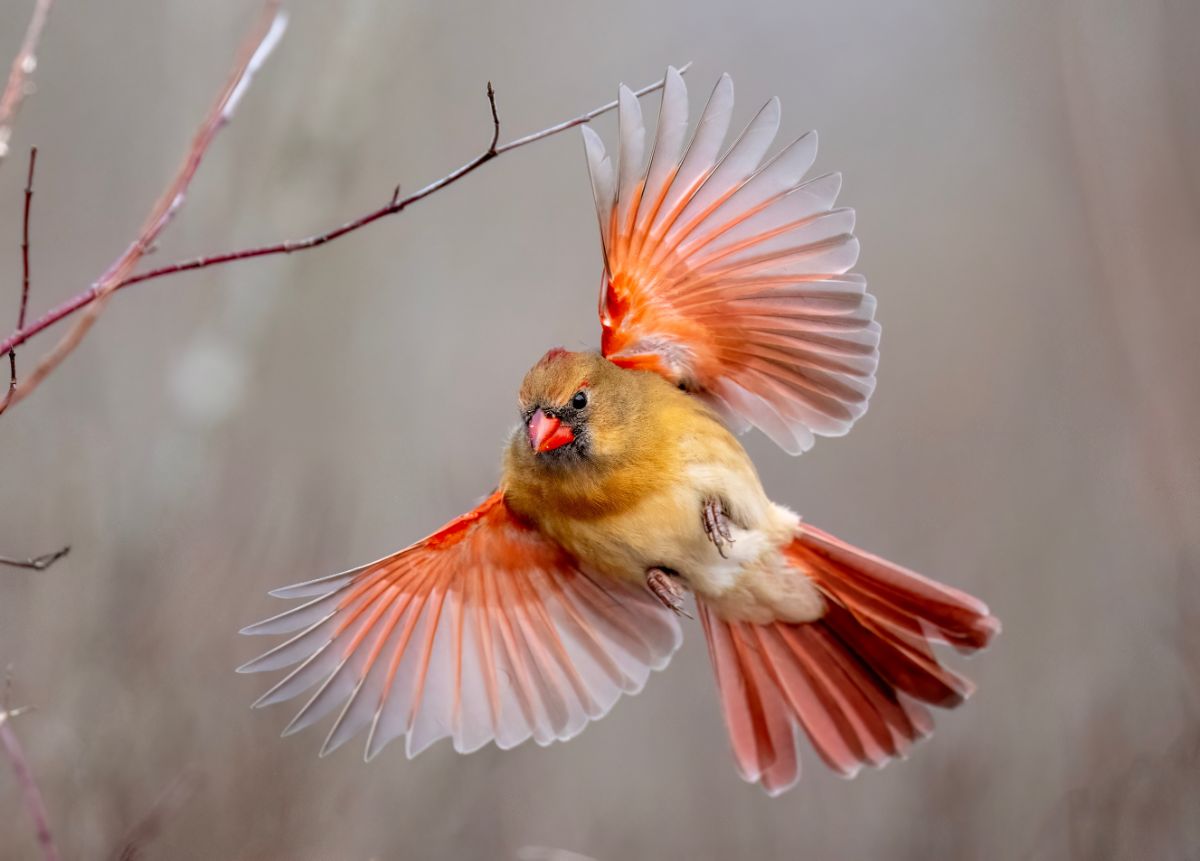
| Bird name: | Northern cardinal |
| Winter foods: | Cracked corn, black oil sunflower seeds, white milo, safflower seeds berries, crushed peanuts |
| Winter nesting sites: | Evergreen shrubs and trees, dense thickets |
| Winter range: | Throughout most of North America |
Fiery red cardinals are hard to miss in wintery landscapes, and their vibrant color helps explain why images of cardinals are often used as décor around the holiday. But these North American natives are also favorites among birders since they don’t migrate in winter, although cardinals may move from yard to yard if food resources are scarce. Even in winter, these birds have an impressive range, and they can be found from Canada to Mexico!
In wildlife habitat gardens, cardinals will happily forage on many seed and berry-bearing plants, including clematis, grapevines, blueberries, and hawthorns. But you can also attract cardinals to your garden with bird feeders filled to the brim with sunflower seeds, cracked corn, and berries. Evergreen shrubs and trees, as well as dense thickets, will provide comfortable shelter for these stunning birds in winter; however, cardinals rarely use birdhouses.
2. Black-Capped Chickadee
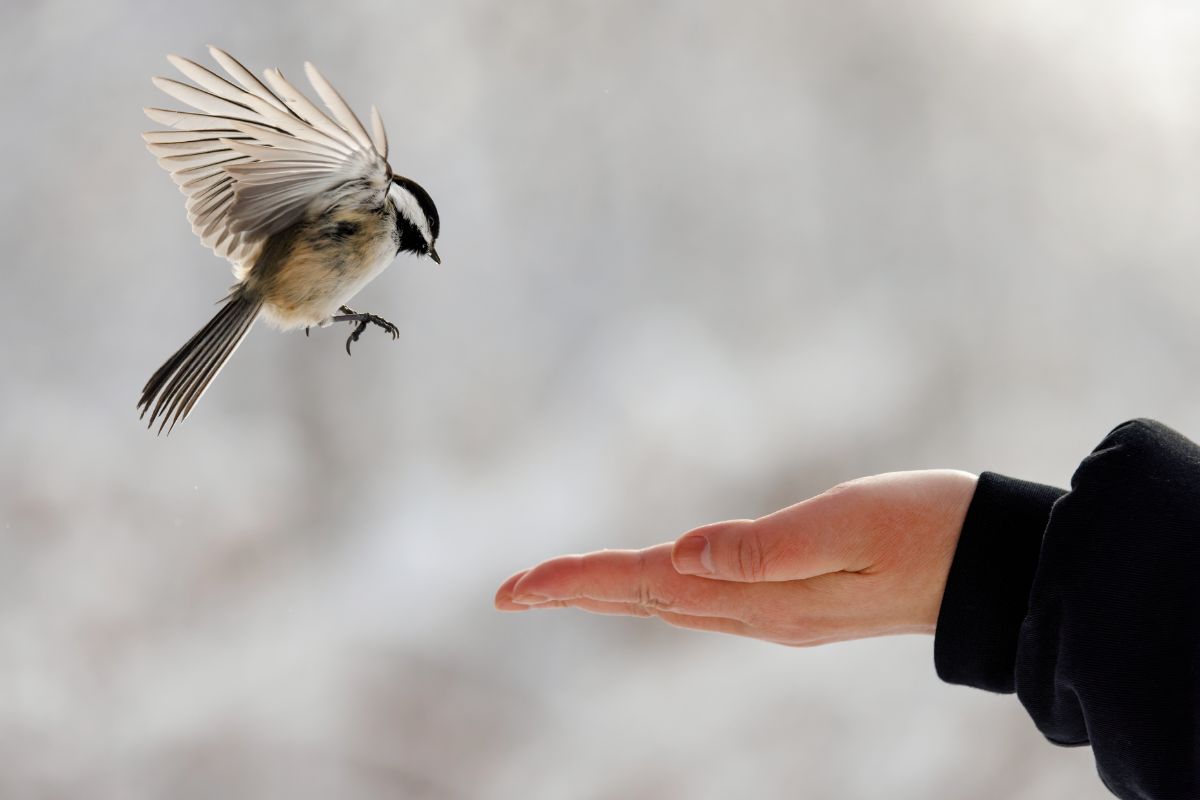
| Bird name: | Black-capped chickadee |
| Winter foods: | Black oil sunflower seeds, peanut butter, hulled sunflower seeds, shelled peanuts, suet, winter berries, dried insects |
| Winter nesting sites: | Evergreen trees and shrubs, birdhouses and roosting boxes |
| Winter range: | Throughout most of North America |
One of the most common birds to visit backyard gardens, chickadees are known for their curious nature and easy-to-please attitude. In North America alone, there are 7 types of chickadees, although the black-capped chickadee is the most widely known and wildly dispersed. Black-capped chickadees don’t migrate even in winter, and their winter range extends from New England to as far south as New Mexico and as far west as California!
If you love backyard birding, you’ll find that black-capped chickadees are very easy to attract. These birds love a range of foods, including black-hulled sunflower seeds, peanut butter, and dried mealworms, but they also love foraging from berry-bearing bushes and dried, seed-bearing plants like sunflowers. As far as shelters go, evergreen trees and shrubs provide ideal winter nesting spots for chickadees, but these birds will also make use of birdhouses and roosting boxes with a 1 ⅛” entrance hole.
3. Downy Woodpecker
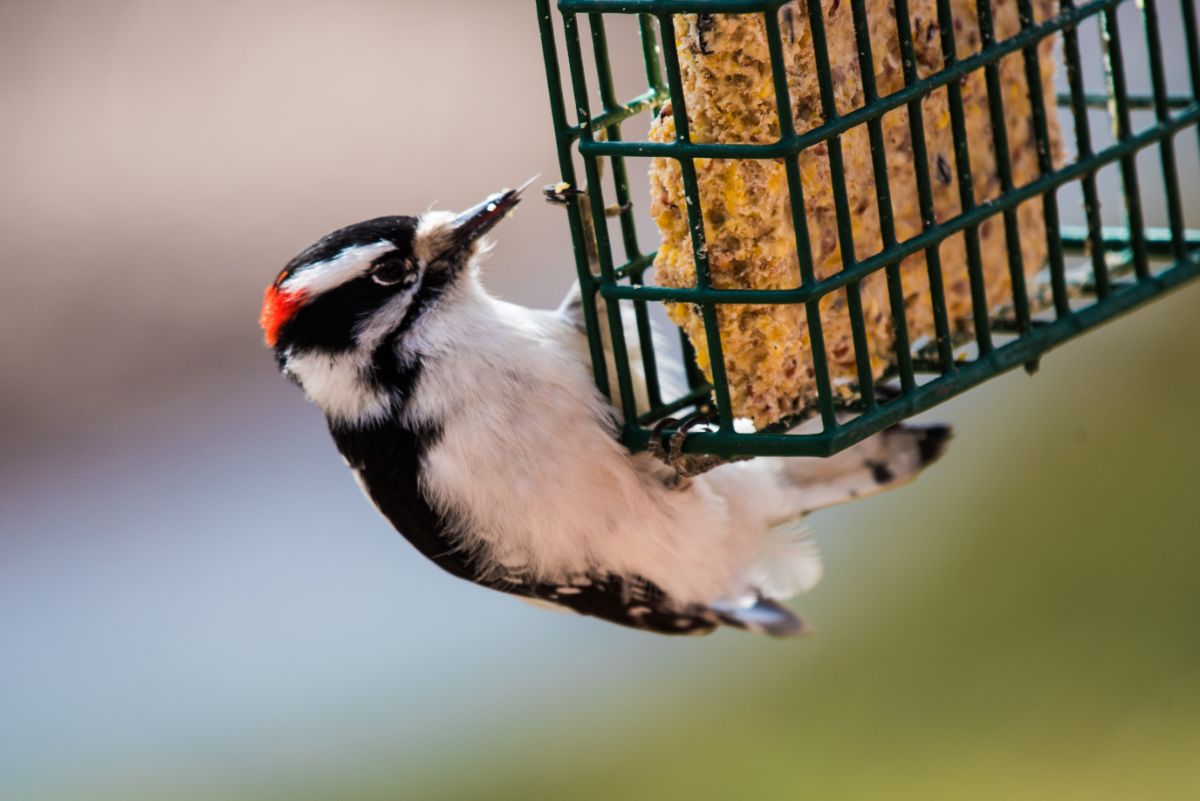
| Bird name: | Downy woodpecker |
| Winter foods: | Black oil sunflower seeds, suet, berries, peanuts, peanut butter, mealworms |
| Winter nesting sites: | Mature trees with shrubs (ideally with berries!) around the base; down woodpeckers will often adapt bluebird boxes by widening the entrance hole! |
| Winter range: | Most of Canada and the United States, except arid, desert regions |
Some woodpecker species migrate, while others stay put through the winter months. But when it comes to resident woodpecker species, the downy woodpecker is one of the most easy to find and reliable visitors to backyard gardens. These small woodpeckers grow to about 7” long, and they can be found throughout many regions of Canada and the United States.
While woodpecker species are famed for their ability to hunt insects in old trees, downy woodpeckers also forage for berries, seeds, and nuts. If you want to attract these darlings to your garden, consider planting some shrubs that produce winter berries, and be sure to add suet cakes and seeds, like black oil sunflower seeds, to your bird station. It’s also wise to leave old tree snags in place to attract woodpeckers as long as they don’t pose a hazard!
4. Crow and Raven
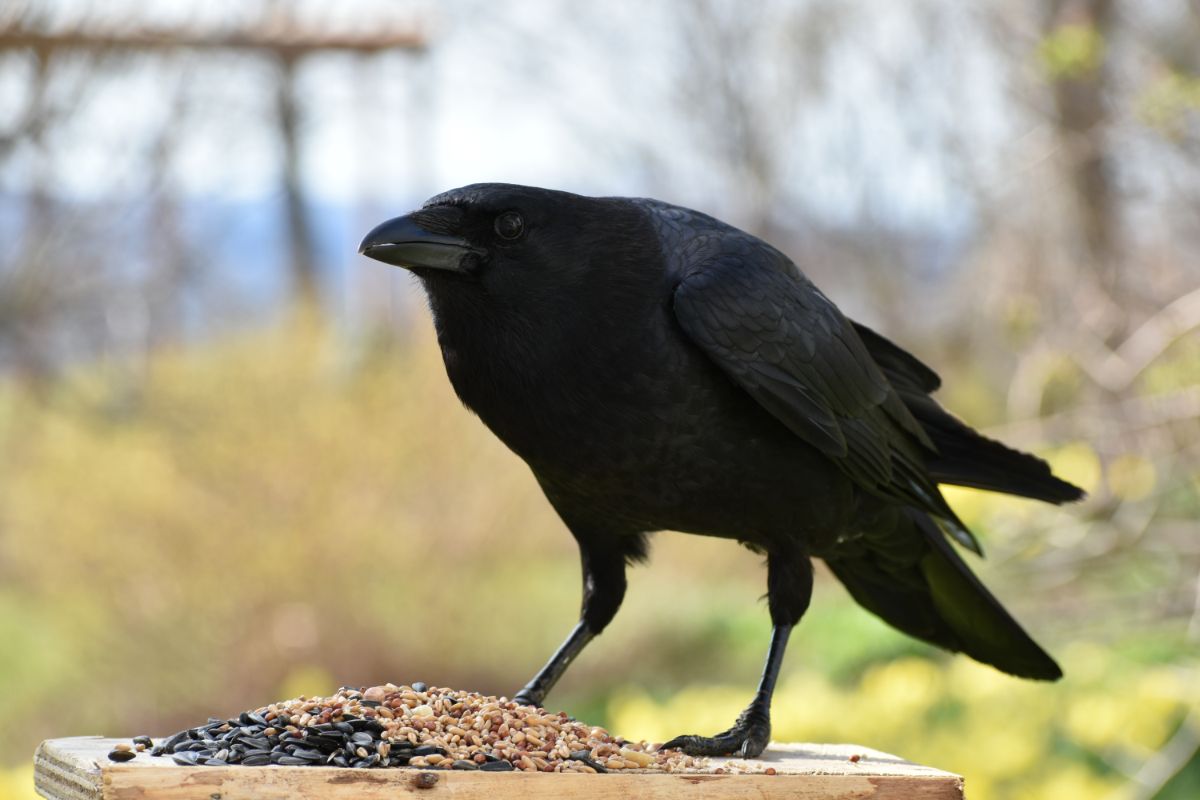
| Bird name: | Crow and Raven |
| Winter foods: | Berries, nuts, meat scraps, pet kibble, sunflower seeds, chokecherries |
| Winter nesting sites: | Mature trees with horizontal branches, telephone poles, fences |
| Winter range: | Crows are native to most of the United States, while ravens can be found in northern and western regions of North America |
Some people consider crows and ravens to be nuisance animals, but Corvids are some of the smartest animals in the world. Crows and ravens have been taught to mimic human speech, they can memorize faces, and some have even mastered the art of using tools! No doubt these fascinating creatures have a lot to teach us, and what better way to learn from crows than by attracting them to your garden in winter!
Some crows will migrate, while others don’t, and ravens generally don’t migrate far, although they may relocate within a local region depending on food availability. If you want to make sure crows and ravens visit your feeding station, try placing whole eggs, unsalted peanuts, or cat and dog food outdoors. But crows aren’t particularly picky eaters, and they will happily devour the leftovers from your rotisserie chicken, bird seed, insects, and berries, too!
5. Blue Jay
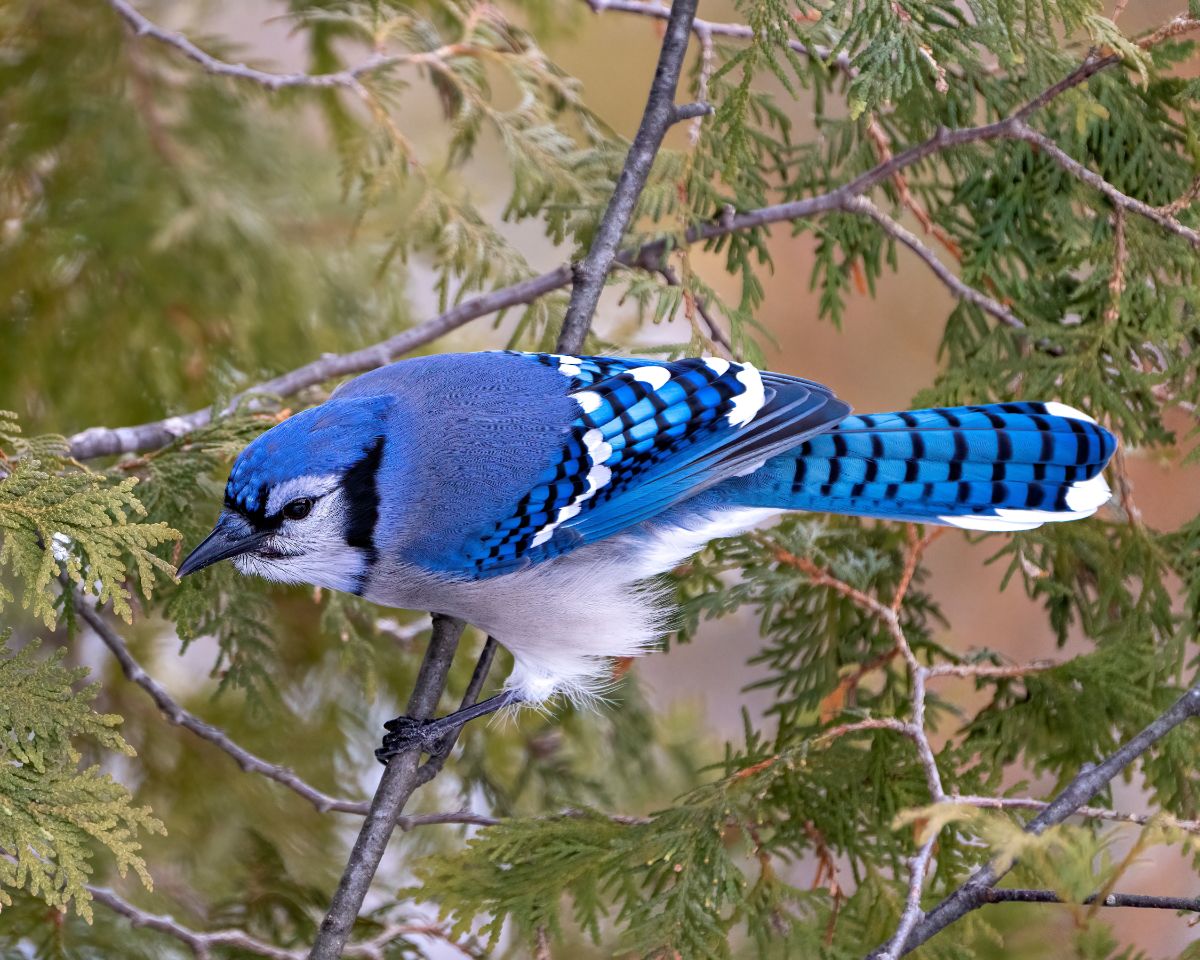
| Bird name: | Blue jay |
| Winter foods: | Unsalted peanuts, acorns, suet, black oil sunflower seed, berries, cracked corn, mealworms |
| Winter nesting sites: | Evergreen trees or other trees and shrubs with dense foliage |
| Winter range: | Throughout most of the Eastern and Central United States and Canada |
Blue jays are close relatives of crows and ravens, and, like their fellow Corvids, jays are incredibly smart. But more than that, blue jays are adept at spreading seeds and nuts, and jays are actually responsible for planting many of the oak trees in our local ecosystems. Interestingly, like squirrels, jays stockpile acorns in autumn, but if they don’t retrieve their acorn stash by spring, it spouts into new oak trees!
While jays are undoubtedly useful birds, most bird watchers adore blue jays for their bright blue coloration and comically sassy attitudes. If you want to attract these feathered jesters to your bird feeders, put out some peanuts and suet cakes. And, if you can, plant a few oak trees, too, because blue jays love them most of all!
6. Tufted Titmouse
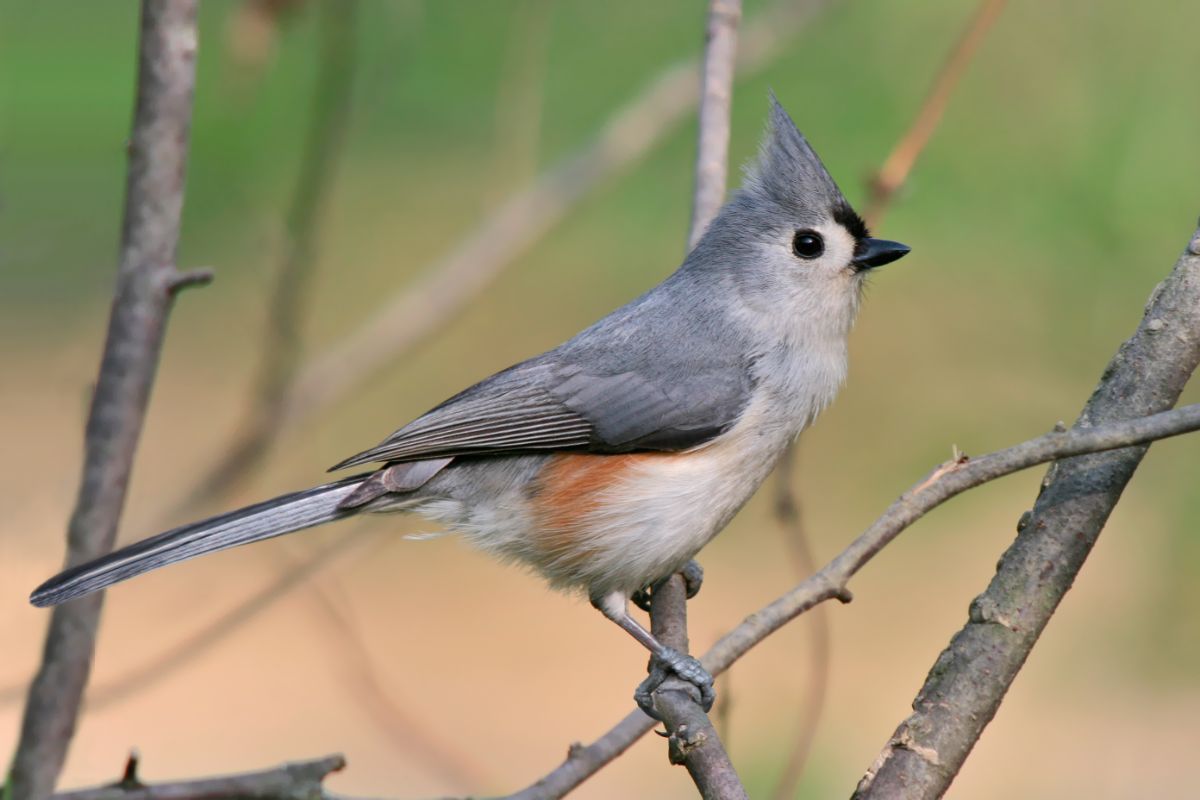
| Bird name: | Tufted titmouse |
| Winter foods: | Nyjer, crushed peanuts, mealworms, berries, safflower, suet |
| Winter nesting sites: | Tree cavities hollowed out by woodpeckers, birdhouses, and roosting boxes with a 1 ¼” opening |
| Winter range: | Throughout most of the Eastern and Central United States |
Titmice are adorable, sociable birds that often travel in a group, along with nuthatches and chickadees. In fact, you can often attract tufted titmice to gardens by putting out the same feeders and birdhouses you’d use to lure in chickadees. Titmice also loves gobbling up berries in winter, so you may want to grow plants like mulberries, blueberries, and Virginia creeper just to attract wild birds!
While tufted titmice are small, they have oversized personalities, and you’ll often spot titmice putting on a display at your birdfeeders. These tiny birds have feathery crowns, which go up and down depending on the bird’s mood. When tufted titmice are feeling happy or confident, you’ll notice that their heads get more “tufted!”
7. Anna’s Hummingbird
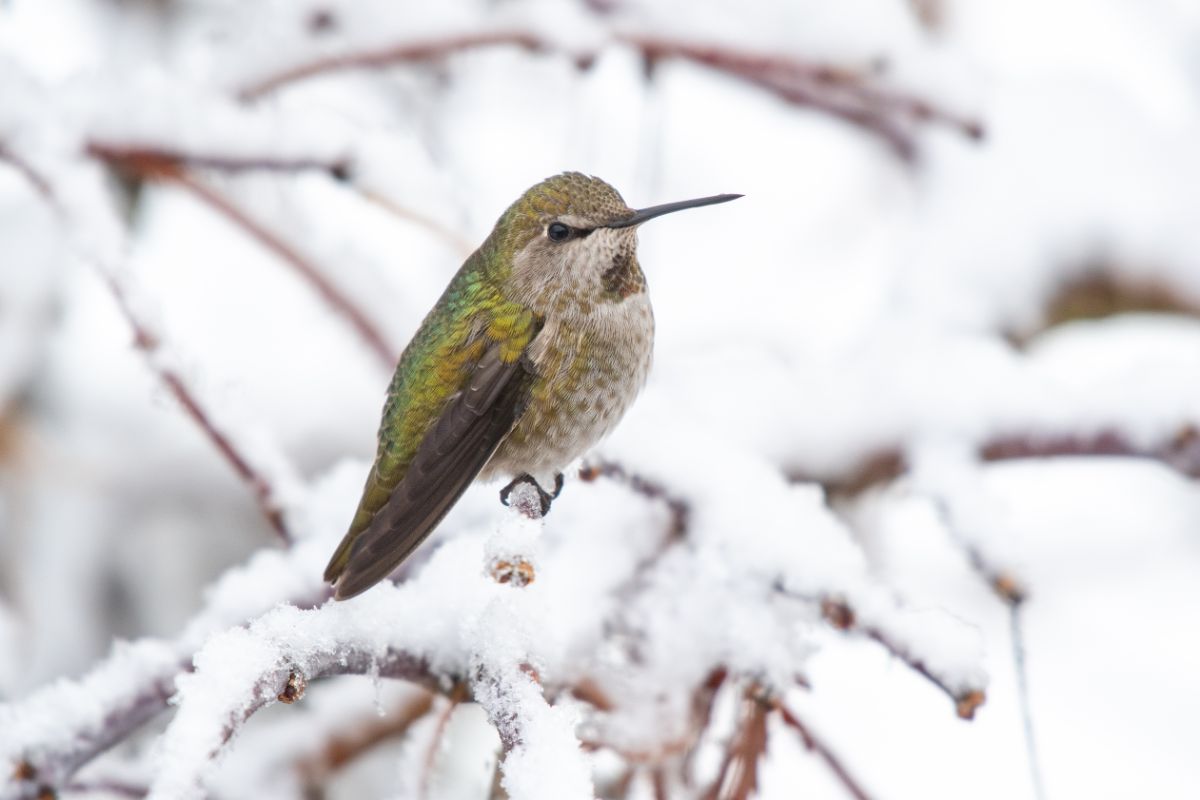
| Bird name: | Anna’s hummingbird |
| Winter foods: | Hummingbird feeders, nectar-rich flowers |
| Winter nesting sites: | Dense shrubs and thickets |
| Winter range: | West Coast of United States and Canada |
Most hummingbirds are migratory, and they head south to warmer climates in winter. But Anna’s hummingbird is especially suited to cool weather, and it can stay on the West Coast of the United States and areas of British Columbia throughout the winter. These birds have evolved to tolerate cooler temperatures thanks to their ability to enter a state of torpor.
When hummingbirds are in torpor, their metabolism slows down, and they may, at times, appear to be frozen in place. If you see this, just let the hummingbirds be… they’re just resting! While Anna’s hummingbirds will feed on nectar from flowers in winter, they also stop by hummingbird feeders, so make sure you keep a winter hummingbird feeder out if you live in an area where these hummers are active!
Tip: To prevent hummingbird feeders from freezing, consider bringing your feeder indoors at night. Or use two hummingbird feeders and rotate them indoors and outdoors so that they never freeze.
8. House Sparrow
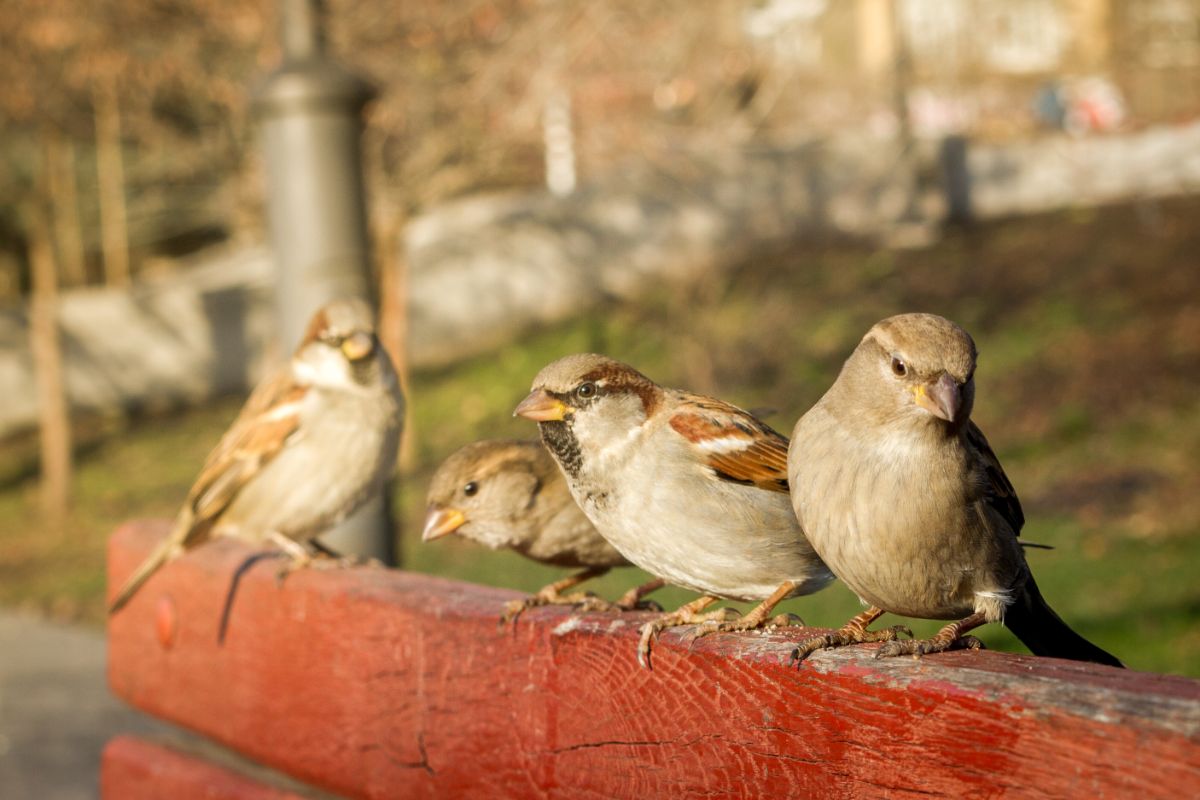
| Bird name: | House sparrow |
| Winter foods: | Various seeds, including safflower, sunflower, millet and thistle seeds, cracked corn, mealworms |
| Winter nesting sites: | Nest boxes, tree cavities hollowed out by woodpeckers |
| Winter range: | Throughout most of North America |
There are many different species of sparrows, including Old World sparrows and New World sparrows. Some sparrows migrate in winter, while other sparrow species, like house sparrows, stay put and will benefit from winter support. These small but cheerful birds are frequent flyers at backyard feeders, and they’re so entwined with humans that they’re categorized as “anthrodependent” birds.
Like pigeons, house sparrows live almost anywhere where humans are present, but they’re rarely found far from human habitations – hence their name, “house sparrows!” Adding sunflower, safflower, millet, and thistle seeds to your feeders will attract these hungry birds during the winter months, although they also love cracked corn too. Just keep in mind that house sparrows typically like to forage for food on the ground, so you may want to scatter some seeds beneath your feeders or allow the sparrows to gather up seeds other birds scatter around.
9. Nuthatch
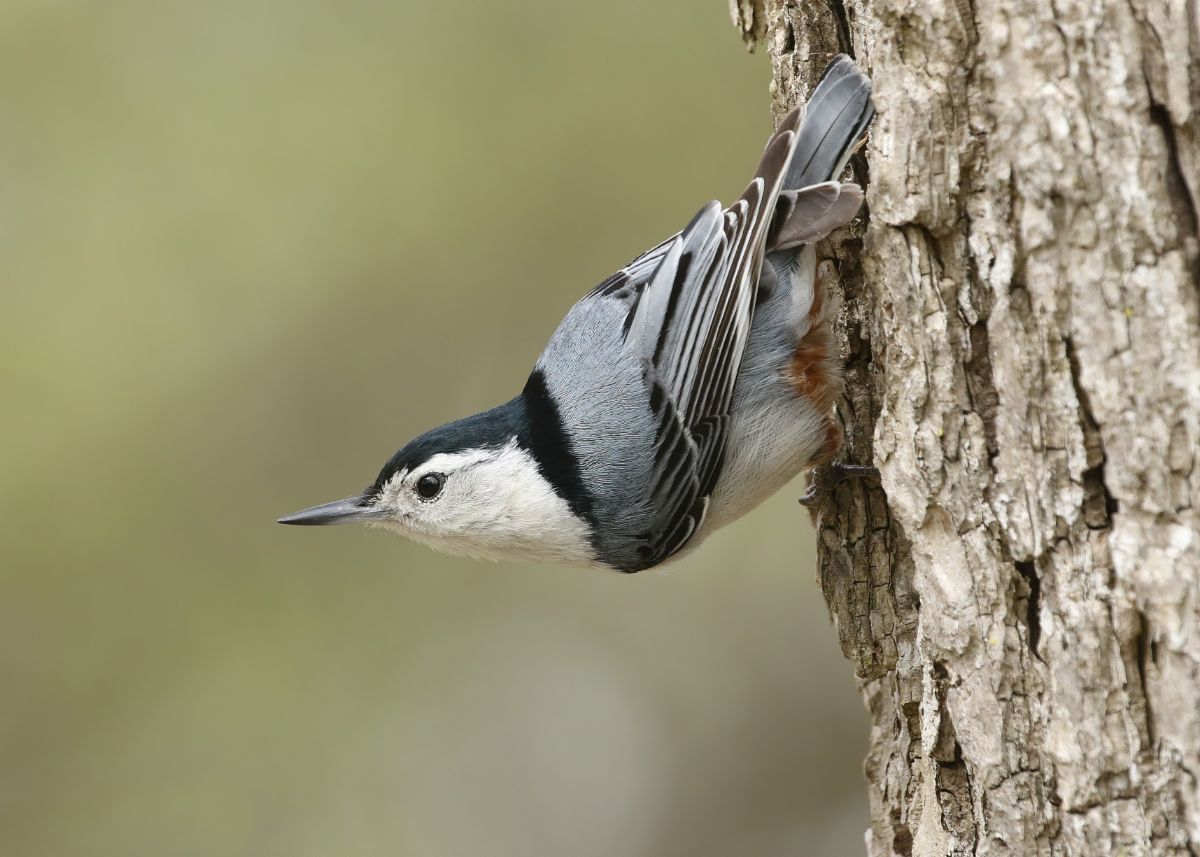
| Bird name: | Nuthatch |
| Winter foods: | Black oil sunflower and safflower seeds, mealworms, hulled peanuts, suet |
| Winter nesting sites: | Tree cavities hollowed out by woodpeckers |
| Winter range: | White-breasted nuthatches are found throughout much of North America, while red-breasted nuthatches tend to favor the northern and western regions of the United States and Canada |
Nuthatches are often confused with woodpeckers because they have small legs, and they often creep vertically up tree trunks. But these small and charming birds are actually more closely related to titmice and chickadees, and you’ll often find these three bird types traveling together. What’s more, if you keep birdfeeders, you can usually stock your feeders with the same types of seeds and attract nuthatches, chickadees, and titmice all at once!
During summer, nuthatches almost exclusively eat insects, but their diet becomes much more dependent on seeds when temperatures drop. Black oil sunflower and safflower seeds are favorite nuthatch treats, but these birds also adore hulled peanuts, mealworms, and suet. Most commonly, nuthatches will nest in tree holes abandoned by woodpeckers, but nuthatches will sometimes also enlarge existing tree holes and huddle inside to stay warm during the coldest part of the year.
10. Northern Mockingbird
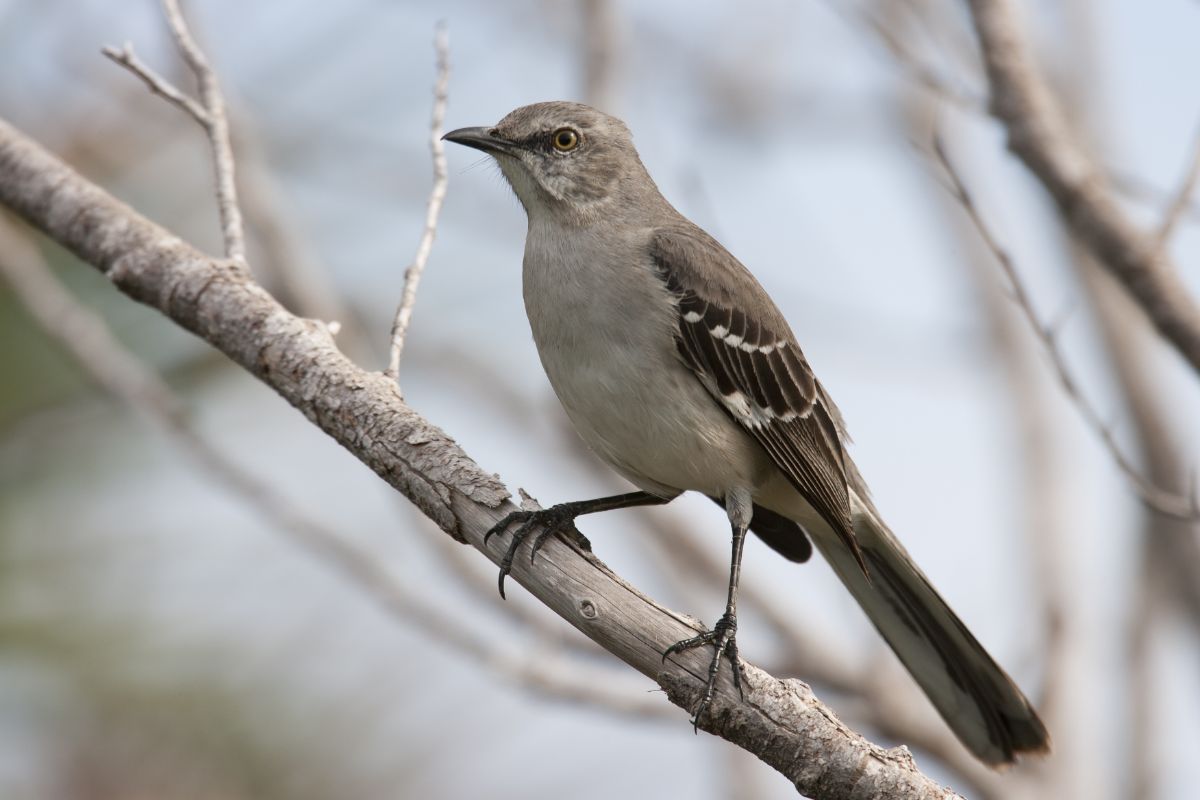
| Bird name: | Northern mockingbird |
| Winter foods: | Berries, suet, mealworms, sliced fruit |
| Winter nesting sites: | Dense shrubs and trees |
| Winter range: | Throughout much of the United States and Mexico |
Like many birds, mockingbirds are omnivores, and they will gobble up insects during the warmer part of the year. But during the cooler part of the year, mockingbirds rely on berries and seeds, so be sure to plant some berry-yielding plants in your garden if you want to attract these birds! Some favorite berry plants for mockingbirds include juniper, pokeberry, blackberry, and elderberry, but these birds will also stop by bird feeders from time to time.
Mockingbirds are famous for their ability to mimic sounds, and studies have found that these birds can learn over 200 different bird songs. Even more fascinating, mockingbirds have also imitated human-made sounds, like car alarms, telephones, and creaky garden gates! And while mockingbirds may look a bit plain at first glance, these birds have attractive white splotches on their wings that really pop when they fly!
11. Dove
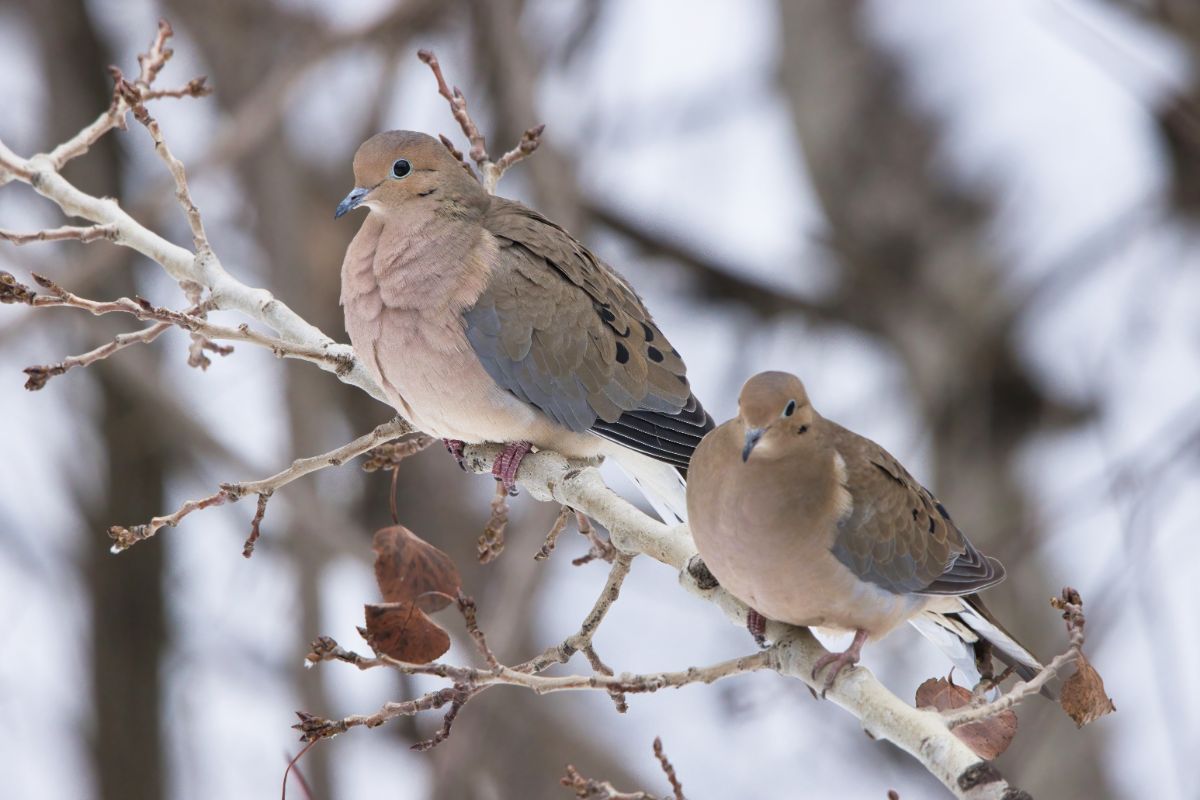
| Bird name: | Dove |
| Winter foods: | Safflower seeds, millet, cracked corn, cracked corn, milo |
| Winter nesting sites: | Evergreens and other plants with dense foliage |
| Winter range: | Depends on the species, but many types of doves can be found throughout the United States and Canada |
Commonly associated with romance and love, doves may seem like delicate birds, but they’re surprisingly hardy. In North America, there are at least 15 types of native doves, including ground doves and Inca doves, although mourning doves are the most famous and easily recognizable dove species. Pigeons are also a type of dove, and they’re sometimes called rock doves or rock pigeons.
Mourning doves are some of the prettiest dove species around, and these birds are named for their haunting “cooing” sounds, which is said to sound a bit mournful. In reality, mourning doves’ distinct call isn’t melancholic, and it’s actually uttered by male doves in search of a mate! Like house sparrows, doves tend to feed on the ground, so be sure to scatter seeds around your bird feeders or invest in some platform feeders, which are much easier for doves to perch on.
12. Pileated Woodpecker
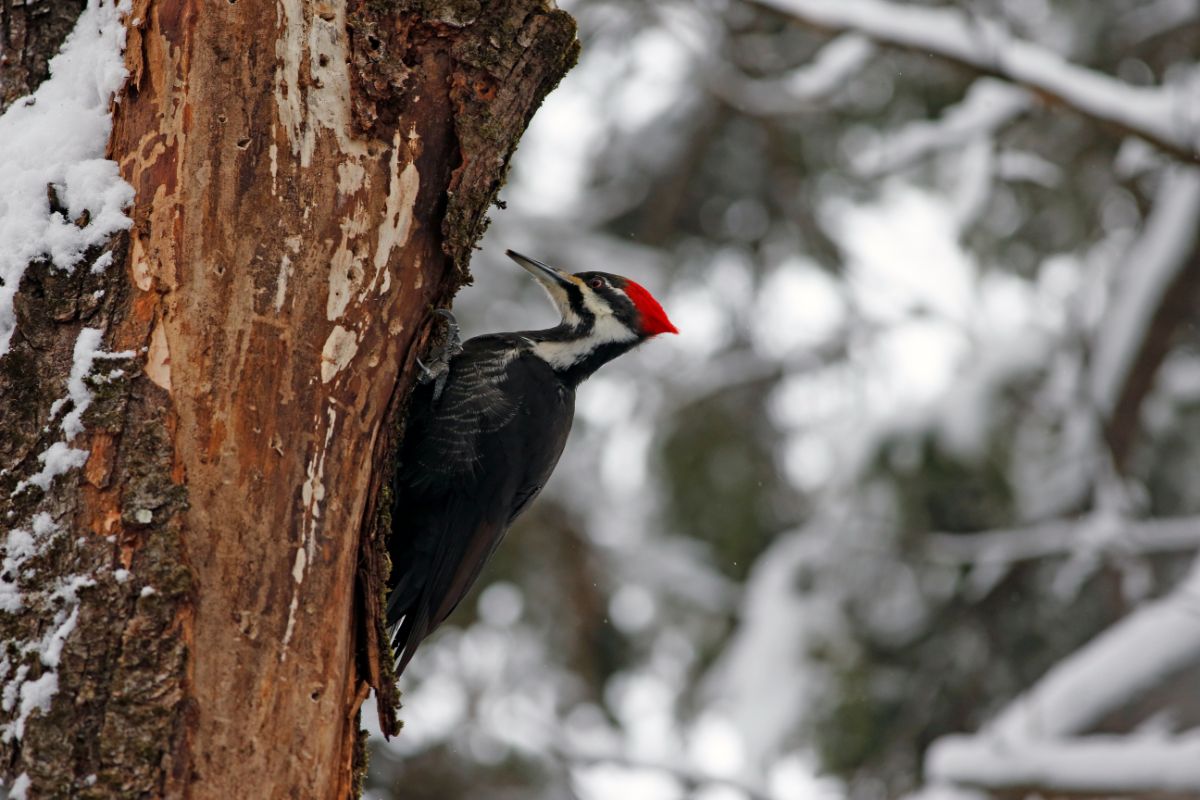
| Bird name: | Pileated woodpecker |
| Winter foods: | Suet, berries, hulled peanuts, peanut butter |
| Winter nesting sites: | Holes in dead trees |
| Winter range: | Eastern United States and Canada |
Like downy woodpeckers, pileated woodpeckers are another Dryocopus species that doesn’t migrate during winter. Instead, these birds typically excavate large holes in old trees and hole up inside to stay cozy and warm. Compared to downy woodpeckers, pileated woodpeckers are much larger, measuring up to 19” long, and they sport a bright red, elongated tuft of feathers on their heads, which makes them look a bit like modern-day pterodactyls!
As with other woodpecker species, pileated woodpeckers adore suet, so you’ll want to be sure to install a suet feeder in your bird station. While store-bought suet is easy enough to come by, you can easily make your own budget-friendly suet with rendered fat purchased at the grocery store. Aside from suet, pileated woodpeckers adore berry-bearing shrubs, like blackberries and sumac, but they’ll also occasionally eat seeds and nuts.
13. Wild Turkey
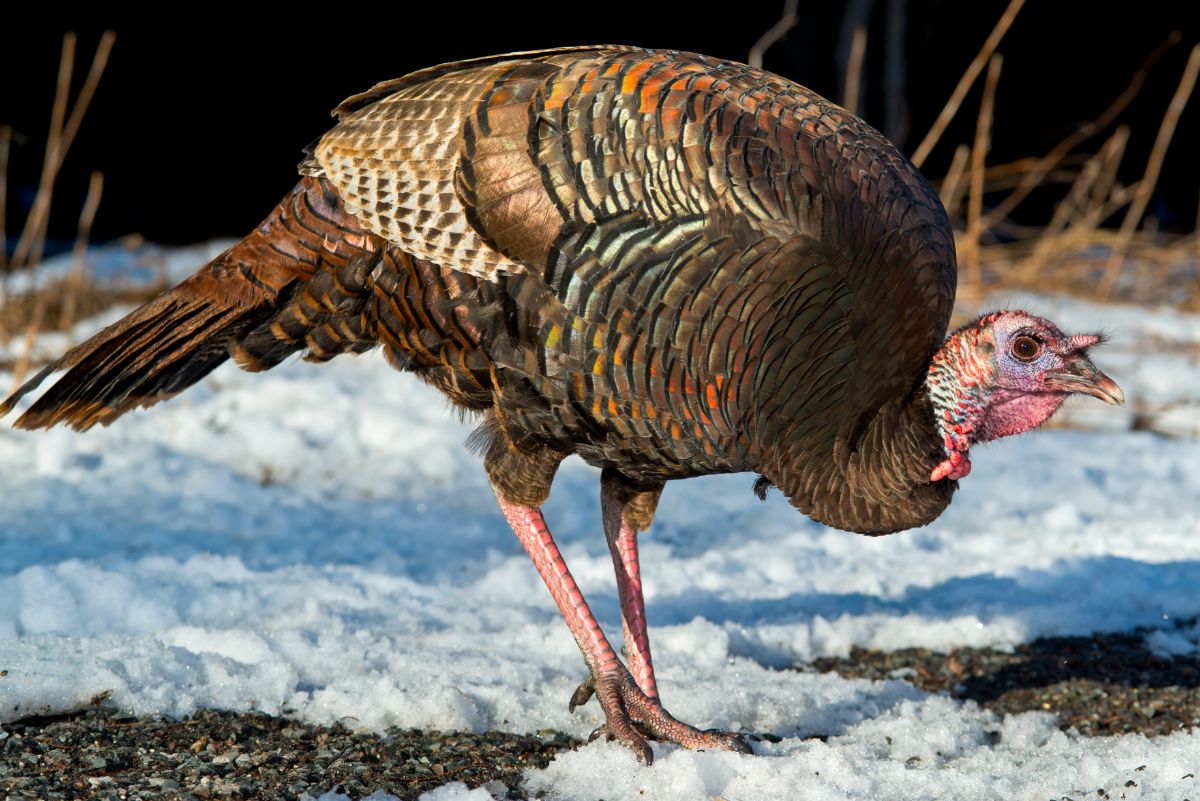
| Bird name: | Wild turkey |
| Winter foods: | Acorns and other nuts, berries, sunflower seeds, millet, milo, and some grasses |
| Winter nesting sites: | Dense evergreens |
| Winter range: | Throughout much of the United States and Mexico |
Once upon a time, Founding Father Benjamin Franklin suggested that the humble turkey should be America’s national bird. While he was outvoted and the bald eagle became America’s national emblem, turkeys are still a quintessentially American bird with lots of history behind them. Archaeological evidence suggests that turkeys were domesticated by certain indigenous groups over 2000 years ago, and turkeys are, of course, the featured “guest” at Thanksgiving.
But beyond their ties to human history, turkeys are magnificent birds with gentle temperaments and easygoing natures. Often spotted traveling in groups, turkeys prowl for food in wide open pastures, but they also gobble up fallen seeds beneath bird feeders. Aside from scattered birdseed, turkeys also flock to areas with lots of winter berries, and they love scouting for acorns beneath oak trees!
14. House Finch
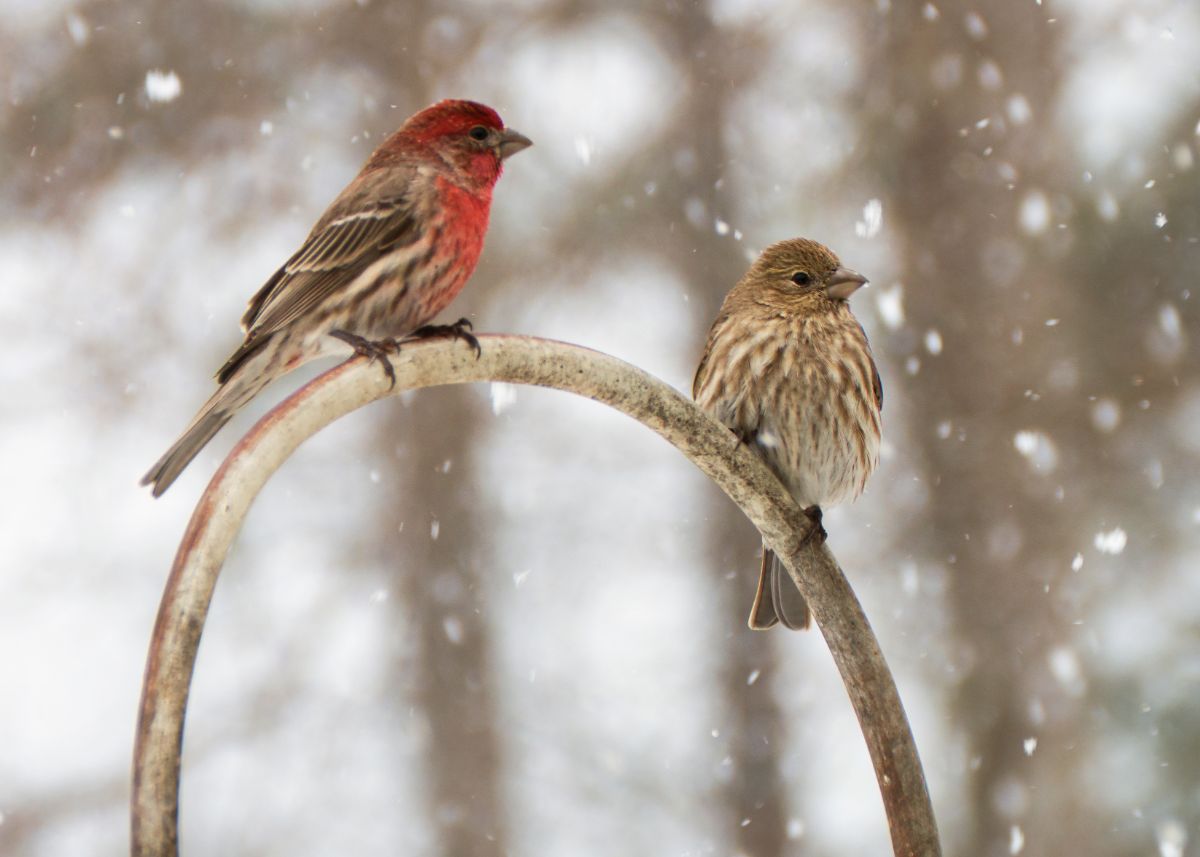
| Bird name: | House finch |
| Winter foods: | Berries, black oil sunflower seeds, millet, fruit, thistle seed |
| Winter nesting sites: | Evergreens, tree cavities |
| Winter range: | Throughout much of the United States and Mexico |
Like cardinals, house finches are sexually dimorphic birds, which makes it easy to tell male and female house finches apart. Male house finches have lots of bright red feathering, while female house finches are more subtle, brown color, which helps nesting mamas hide from predators. Some house finches will migrate short distances, and house finches in very chilly areas may migrate further, but many house finches are resident birds that don’t go far, even in winter.
As with house sparrows, house finches are naturally drawn to human habitations, but you can attract more house finches to your garden by providing them with a mix of seeds, including black oil sunflower seeds and millet. These brilliant birds are also drawn to berry-yielding shrubs, like mulberries and crabapples, as well as flowers with large seedheads, such as asters and field thistles. And, of course, if you want to bring more house finches and other birds to your yard, don’t forget to install a heated bird bath, so birds will always have something to drink, even when water is frozen elsewhere!
15. Bobwhite Quail
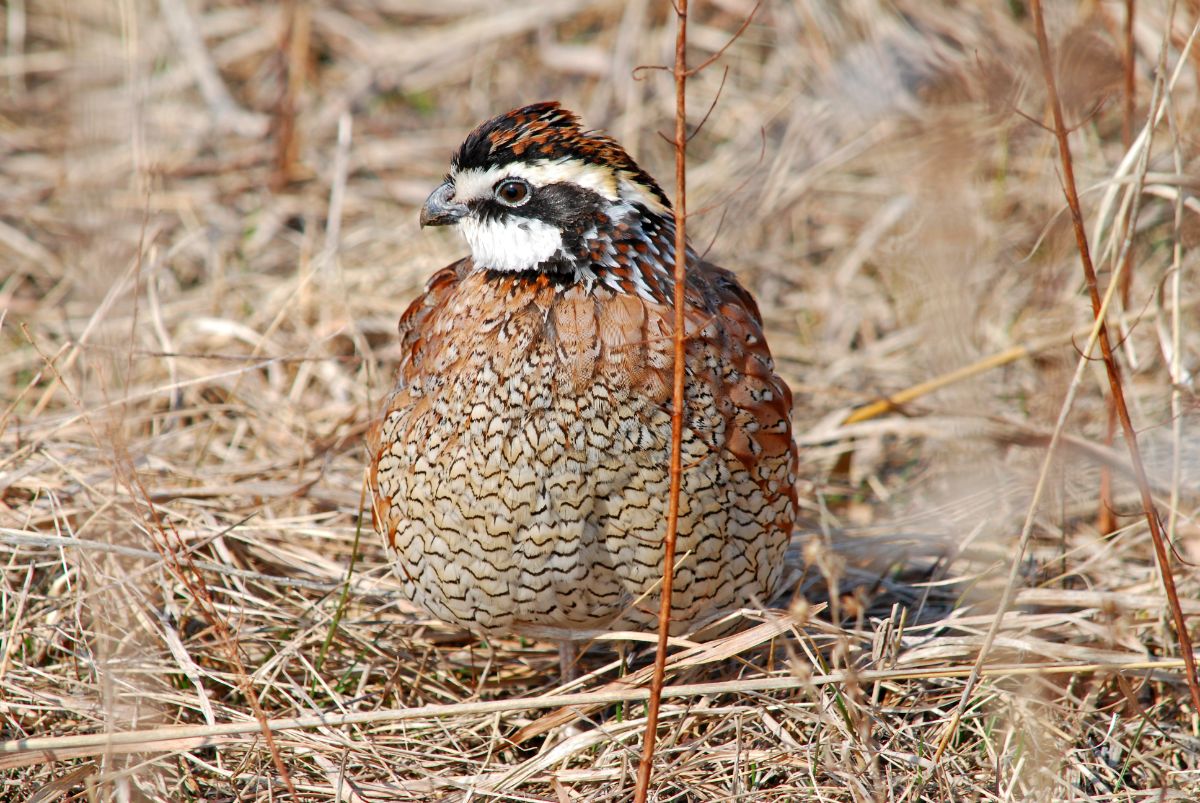
| Bird name: | Bobwhite quail |
| Winter foods: | Milo, millet, berries, acorns, cracked corn |
| Winter nesting sites: | Areas with grassy or woody covering |
| Winter range: | Much of Eastern and Central United States, excluding New England |
Cute as buttons, bobwhite quails are ground-dwelling birds like turkeys, although they are much smaller and more secretive. Many people can go their whole lives without ever seeing quail in the wild; however, if you put out the right winter foods and grow the right plants, you may be able to attract these mysterious birds to your garden! Northern bobwhite quails are found throughout much of the Eastern and Central United States and Mexico, but chilly New England weather is too much for these birds, and you’re unlikely to spot them north of Pennsylvania.
Because quail primarily eats grains, you’ll need to plant seed-bearing plants and grasses if you want to bring quail to your backyard. Scattering cracked corn, milo, and other seeds on the ground or on low-platform feeders can also attract quail, and since quail adores dust baths, you may want to add one of those, too. On cold nights, quail often hunker down in dense grassy or woody areas, so you may want to leave a section of your property unmowed to provide extra winter protection for visiting quail.
Frequently asked questions
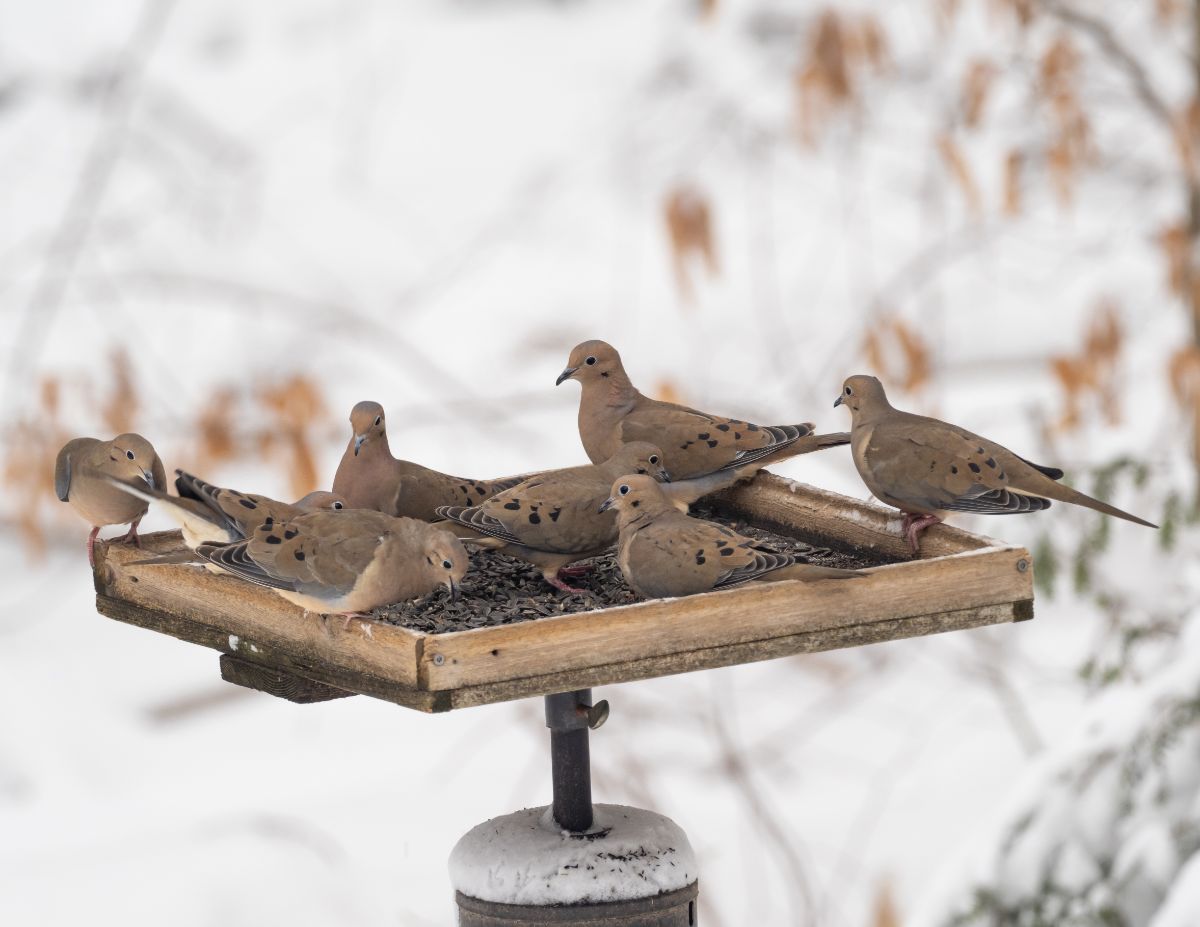
Resident birds are non-migratory birds that don’t stray from their summer breeding grounds even when winter arrives. These hardy birds are especially adapted to winter weather, and they often forage for seeds and berries in winter, although they always appreciate finding extra food at bird feeders!
Several different birds are nicknamed “snowbirds,” but the term most often refers to juncos. Most juncos are migratory birds that breed in the northern United States and Canada and head south in winter, although some juncos stay put year-round.
Some birds can survive winters without issues, and they have no need to migrate. However, true migratory birds often need to migrate to find food because they rely on insects or other food staples that aren’t available in winter. If these birds don’t migrate, they may not be able to locate the food they need to survive the winter months.
While some birds don’t migrate, it’s estimated that about 75% of North American birds head south in winter. It’s no wonder why we have such love for the hardy birds that stay with us all winter!
Many migratory birds will return to the same region when they migrate back in spring. In fact, some migratory birds even return to the very same yard!
Yes. Most hummingbirds, including ruby-throated hummingbirds, head south during winter. Many of these birds overwinter in Mexico and then head north again when the weather starts to improve in spring.
Summary
Compared to the raucous nature of our spring and summer gardens, winter gardens can feel desolate and barren. But there are some intrepid birds that will weather out the winter storms along with us, and we can enjoy these hardy, feathered compatriots even when the winter winds are blowing. So why not put out a bird feeder or two, fill up a heated bird bath, plant some winter berries, and spend the winter months bird-watching local nuthatches, turkeys, and finches?
If you liked this article and want to learn more about creating a winter habitat for birds, we have a full guide on that, too. And, while you’re at it, you may also want to make some of these easy DIY bird treats (with a DIY suet recipe) to feed resident birds during the winter months!

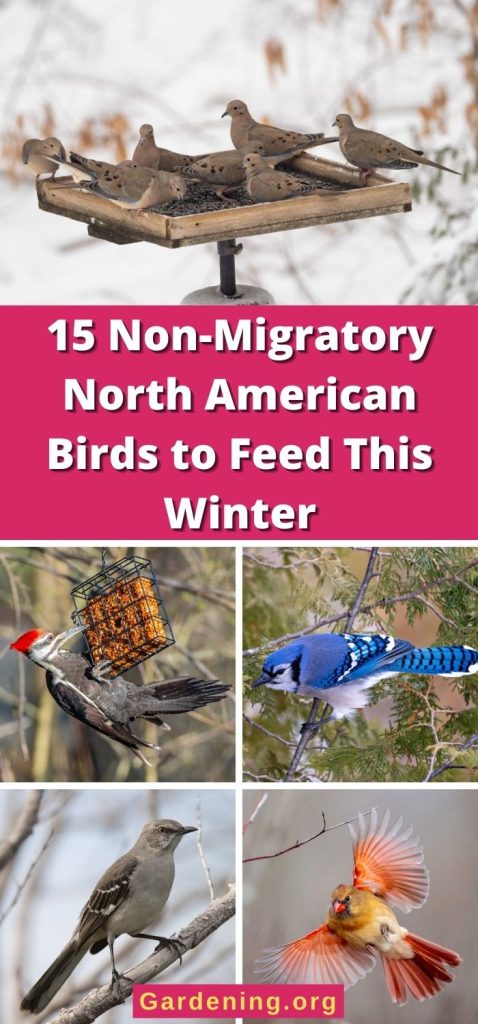
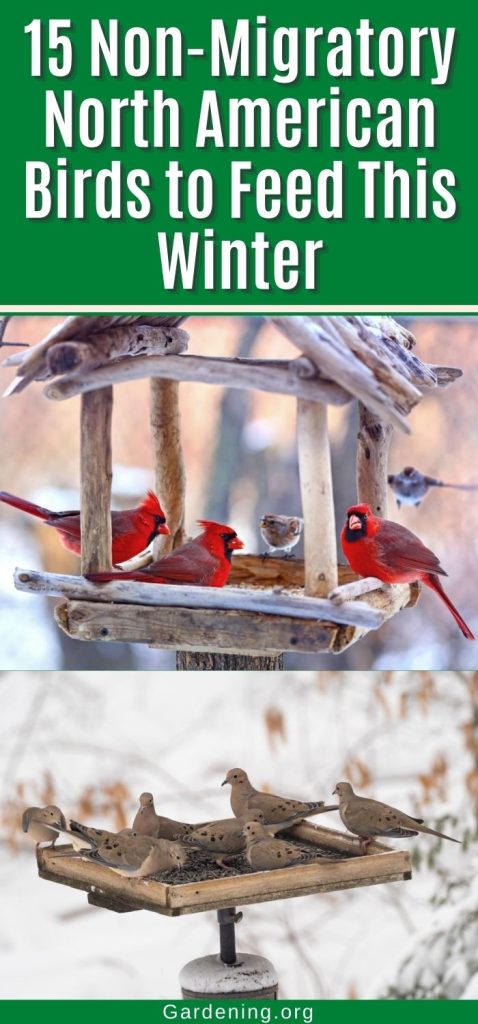
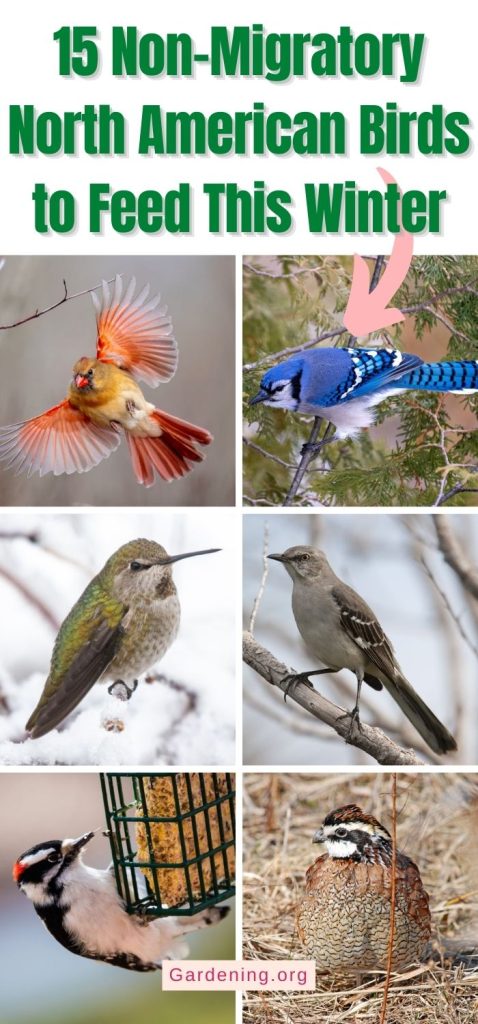
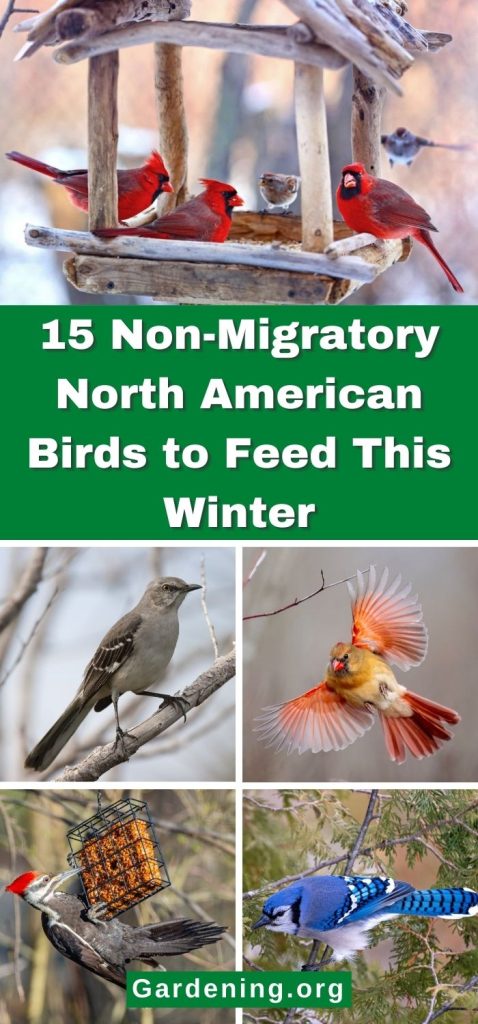
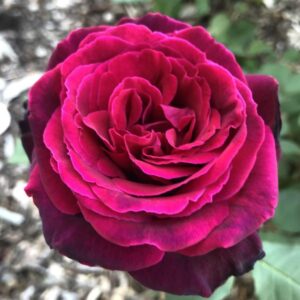
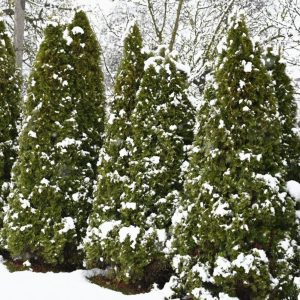


Joy
Love this article. Very informative. Great suggestions. Thank you.
Jane Inancsi
What about Carolina Wrens ? This winter for 1st time they have stayed here in S.W. Virginia. My favorite.
Mary Ward
With these climate changes a lot of areas are seeing birds stay through that used to migrate further south.
Susan Davis
The TEMU adds on your website are nearly impossible to avoid as I scroll through the article. You almost need a missile seeker to be sure you don't touch the ads with your mouse as TEMU thinks you want to be their friend for life.